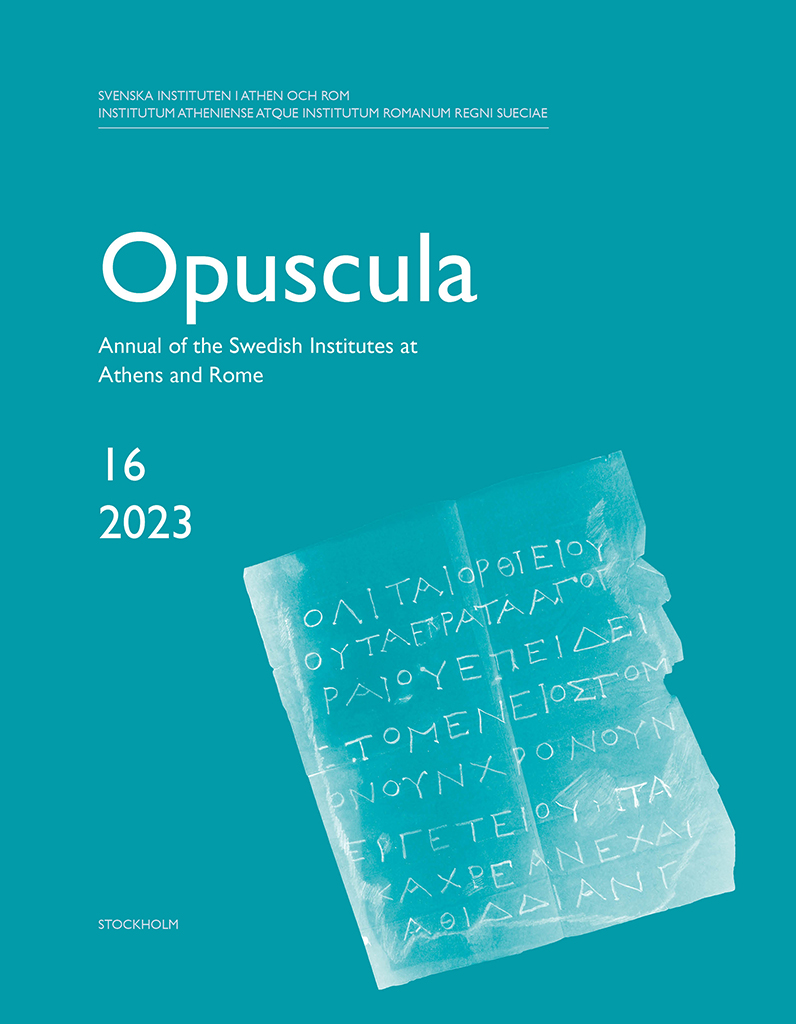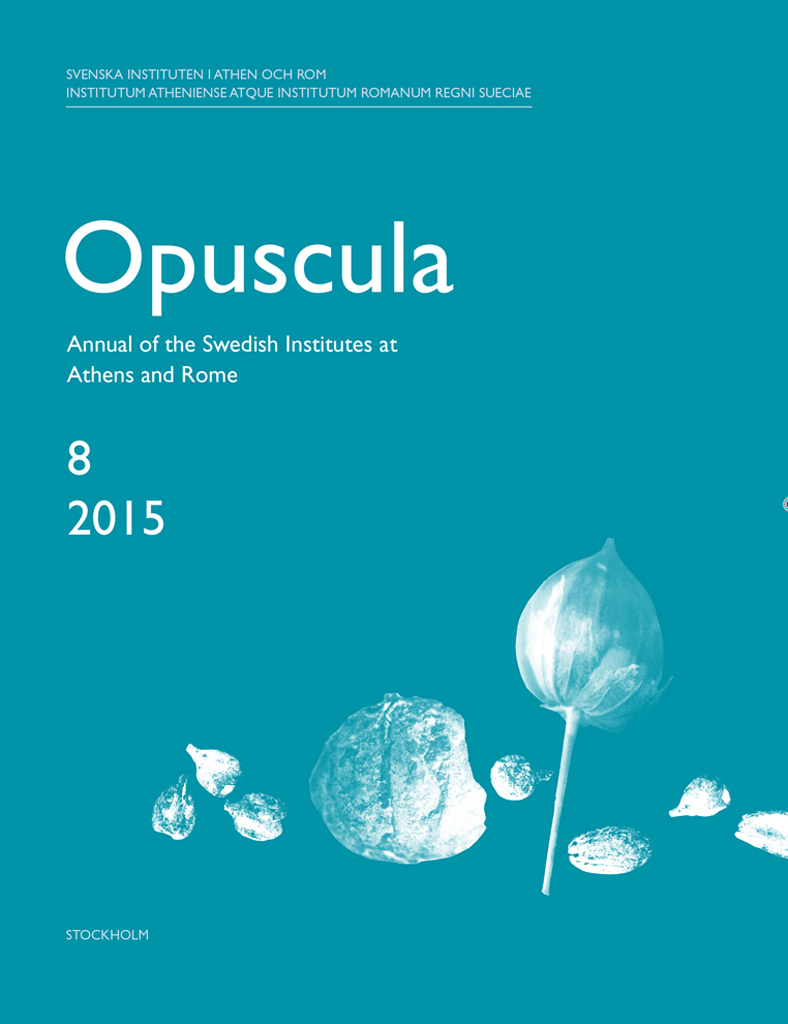Opuscula is published by the Swedish Institutes at Athens and Rome, with the aid of a grant from the Swedish Research Council. Distributed by Eddy.se AB. View journal at ERIH PLUS. All content available with open access. The Palamas Archaeological Project. A preliminary report of the 2022 fieldwork conducted by the ongoing Greek–Swedish archaeological field programme in Palamas, region of Karditsa, Thessaly By Maria Vaïopoulou, Robin Rönnlund, Fotini Tsiouka, Johan Klange, Derek Pitman, Rich Potter, Ian Randall, Harry Manley, Elisabet Schager, Sotiria Dandou & Lewis Webb Abstract This paper presents the preliminary results from the 2022 fieldwork of the Palamas Archaeological Project, an ongoing Greek–Swedish collaboration in the region of Karditsa, Thessaly. Working over the course of two separate field seasons, the project team conducted aerial, architectural, fieldwalking, and geophysical surveys at a number of sites within the survey area, including at the important multi-phase fortified settlements at Metamorfosi and Vlochos. Limited excavations were also conducted at the latter site, producing new evidence for the Hellenistic and Early Byzantine phases of the ancient city, including a probable cemetery. The work continues to add to the knowledge of the archaeology of the region, highlighting the long and dynamic history of human habitation in western…
Opuscula is published by the Swedish Institutes at Athens and Rome, with the aid of a grant from the Swedish Research Council. Distributed by Eddy.se AB. View journal at ERIH PLUS. All content available with open access. The death of infants in Early Iron Age Cyprus. A jar burial from Kition-Bamboula By Sabine Fourrier (Maison de l’Orient et de la Méditerranée Jean Pouilloux, France) & Anna Georgiadou (University of Cyprus, Cyprus), in collaboration with Bérénice Chamel (Maison de l’Orient et de la Méditerranée Jean Pouilloux, France), Nathalia Denninger (Bibliothèque Nationale de France, France), Armelle Gardeisen (Université Paul Valéry, France), Katerina Papayanni (National and Kapodistrian University, Greece) & Tatiana Theodoropoulou (Cultures et Environnements Préhistoire, Antiquité, Moyen Âge, France) Abstract During recent excavations of the French Archaeological Mission at Kition-Bamboula, in modern day Larnaka, Cyprus, an infant jar burial was discovered. It was found under a floor layer in a domestic context, and is dated to the beginning of the Late Cypriot IIIB period (end of the 12th– early 11th century BC). This jar burial is part of a series which seems to be attested, at least in the present state of documentation, only in eastern Cyprus (Enkomi, Salamis and, on a…
Opuscula is published by the Swedish Institutes at Athens and Rome, with the aid of a grant from the Swedish Research Council. Distributed by Eddy.se AB. View journal at ERIH PLUS. All content available with open access. The Swedish Jordan Expedition 2014 at Tall Abu al-Kharaz. Preliminary results from Areas 12 and 13 By Peter M. Fischer & Teresa Bürge Abstract In previous seasons excavations have concentrated on the periphery of the city of Tall Abu al-Kharaz, a multi-period tell in the Central Jordan Valley. Tall Abu al-Kharaz flourished from the Early Bronze to Islamic times, from roughly 3200 BC to the 10th century AD. The main object of the field work in 2014 was to investigate the area around the geographical centre of the city (Area 12). Preference was given to further investigation of the Iron Age sequence, i.e. the period from the 12th to the 7th centuries BC (local Phases IX–XV). Another task was to extend the excavations in the northern part of the city, Area 7, which produced essential information on the Iron Age, towards the south (Area 13) in order to generate a coherent picture of Iron Age occupation in the city’s northern half. Domestic structures…
Opuscula is published by the Swedish Institutes at Athens and Rome, with the aid of a grant from the Swedish Research Council. Distributed by Eddy.se AB. View journal at ERIH PLUS. All content available with open access. The Swedish Jordan Expedition 2013 at Tall Abu al-Kharaz. Preliminary results from Areas 9, 10 and 11 By Peter M. Fischer & Teresa Bürge Abstract The Swedish excavations at Tall Abu al-Kharaz, a twelve-hectare tell in the central Jordan Valley, continued in 2013 in order to shed further light on the Iron Age occupation of this city that was first settled around 3200 BC, corresponding to the conventional Early Bronze Age IB. The Iron Age occupation lasted from the 12th century BC until 732 BC, when the city was conquered by the Neo-Assyrians. From 2009 to 2012, excavations in Area 9 revealed an exceptionally well-preserved two-storey compound dating from Iron Age I (local Phase IX), i.e. around 1100 BC. The stone compound was exposed for a length of 46 m. It consists of 21 rooms, with walls still standing to a height of more than 2 m. Several hundred complete vessels and other objects point to the extensive contacts of a fairly rich…




